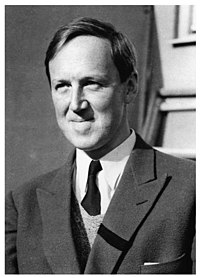
Photo from wikipedia
The Brio system is a two-by-two system of conservation laws arising as a simplified model in ideal magnetohydrodynamics (MHD). The system has the form \begin{align*} \partial_t u+\partial_x \Big({\textstyle \frac{u^2+v^2}{2}}\Big)=0,\\ \partial_t… Click to show full abstract
The Brio system is a two-by-two system of conservation laws arising as a simplified model in ideal magnetohydrodynamics (MHD). The system has the form \begin{align*} \partial_t u+\partial_x \Big({\textstyle \frac{u^2+v^2}{2}}\Big)=0,\\ \partial_t v+\partial_x \big(v(u-1)\big)=0. \end{align*} It was found in previous works that the standard theory of hyperbolic conservation laws does not apply to this system since the characteristic fields are not genuinely nonlinear on the set $v=0$. As a consequence, certain Riemann problems have no weak solutions in the traditional class of functions of bounded variation. It was argued in Nonlinearity 9, 1547--1563 (1996) that in order to solve the system, singular solutions containing Dirac masses along the shock waves might have to be used. Solutions of this type were exhibited in Proc. Edinb. Math. Soc. 55, 711--729 (2012) and Russ. J. Math. Phys. 22, 518--527 (2015), but uniqueness was not obtained. In the current work, we introduce a nonlinear change of variables which makes it possible to solve the Riemann problem in the framework of the standard theory of conservation laws. In addition, we develop a criterion which leads to an admissibility condition for singular solutions of the original system, and it can be shown that admissible solutions are unique in the framework developed here.
Journal Title: Nonlinearity
Year Published: 2018
Link to full text (if available)
Share on Social Media: Sign Up to like & get
recommendations!